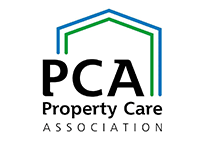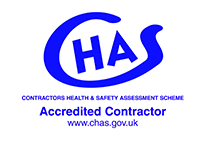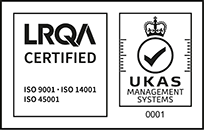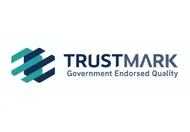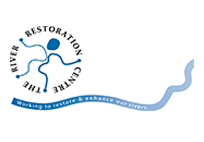Call us free on 0808 168 9540
Call us free on 0808 168 9540

Development sites can contain many plants that might appear problematic because they are dense and make parts of a development site inaccessible. However, most such plants can be removed from a site when it is cleared ahead of construction.
The problem is that Japanese knotweed could hidden amongst other tall, scrubby vegetation, or it might be that the presence of knotweed on a site was not noticed during due diligence checks or surveys.
As knotweed can exert a high cost impact on a development project, it is essential to identify it as early as possible. Invasive weed surveys should be undertaken as soon as land is planned to be developed. Leaving it too late can limit the options for treatment, resulting in elevated costs for immediate remediation solutions.
On many sites, particularly where knotweed covers large areas, or lots of separate areas, tailored strategies to eradicate Japanese knotweed can be developed.
Such tailored solutions are particularly useful for property developers, as they consider the ways that knotweed-affected parts of a site are to be used or developed. Cheaper but longer period solutions can thus be employed as fully as possible so that budgets allow more expensive and immediate solutions to be adopted only where they are necessary.
The most complete, effective and immediate knotweed solution is to fully excavate the knotweed from the ground and effectively dispose of it. This waste comprises the knotweed rhizomes (underground shoots and roots) and a comparatively large volume of soil that is mixed up with, or bound to, the knotweed material.
However, it is sometimes possible to reduce the amount of expensive waste generated by separating the soil from the knotweed material. This screening process can be undertaken using a range of methods. For relatively small amounts of knotweed, this can be done manually, by workers simply picking through the excavated material and screening and collecting pieces of rhizome from it.
When disposed of offsite, knotweed is typically sent to an appropriately authorised landfill site for burial into a deep containment cell away from the edges of the landfill. However, the same burial cell concept can be applied on a smaller scale to development sites, if there is room to excavate an appropriately sized cell to contain all the knotweed waste generated.
In some cases, it is possible that the expense and volume requirements for cell burial are not available, but there is space that could be designated for the laying down of excavated knotweed in a bund or other formation where it would not get in the way of development or where use of the land could be compromised by the presence of a knotweed. Such designated knotweed areas could then be treated over required periods using cheaper treatment methods such as foliar applications of herbicide.
There are other types of waste disposal facility that are authorised to accept and treat knotweed materials. However, haulage to landfill is by far the most common.
The regulations around the creating, handling, transport and disposal of waste are strict, and there can be confusing grey areas about what actually comprises ‘waste’ – what is waste to one, could be a raw material to another. The fines and criminal sanctions associated with improper management of waste can be hefty. It is therefore important to ensure that whenever you create knotweed waste, you comply with the law and with the the appropriate regulations.
Regulations on pesticide use have become increasingly restrictive in recent years. Recent research on the effectiveness of those herbicides that are approved for use on knotweed has resulted in just a few active ingredients being recommended.
The laws around pesticide use are stringent, and are necessary to protect users, the public and the environment from potential harm. Although some products are available for public purchase and use, their formulations are much weaker than in the professional products used by those trained and certified to apply them.
Additionally, in order for herbicides to be effective in treating knotweed, they need to applied at appropriate times of year and in a manner that ensures an effective dose is delivered to the deep and extensive rhizomes.
Most knotweed treatments will start with the formulation of a plan – often referred to as a Knotweed Management Plan (KMP). This will typically assess the size of the problem and reviews the appropriate remediation solutions, which will usually comprise excavation and/or herbicide treatment options.
As the rhizome system can be deep and extensive, and as only a small fragment of rhizome is all that’s needed for it to spread, regular monitoring is often required regardless of what treatment was carried out. It is sometimes hard to guarantee that 100% of an infestation was excavated, and for this reason, monitoring visits to make sure any residual pieces of rhizome that develop into new shoots can be effectively treated. Eradicating small shoots from small rhizomes pieces is usually much more easily achieved with a spot application of herbicide than initial applications to the foliage of large stands.
At Phlorum we have been treating and removing Japanese knotweed from a wide variety of development, commercial, industrial and residential sites for decades. We continue to undertake work for most of the largest property developers and house builders in the UK.
As a business that’s been established since 2003, we have extensive experience in the myriad complexities of the development planning and constriction processes. We understand our clients unique needs and the challenges they face. Our business is focused on solving difficult problems. We are here to help.
Phlorum staff were instrumental in forming the Invasive Weed Control Group of the Property Care Association (PCA), which is the premier professional body for knotweed control industry.
Our commercial Japanese knotweed removal specialists hold appropriate qualifications and certification from appropriate bodies such as the PCA, the Construction Skills Certification Scheme and the City & Guilds National Proficiency Test Council.

Dr Paul Beckett is one of the UK’s leading experts in Japanese knotweed and is a member of the Expert Witness Institute. He regularly provides Japanese knotweed expert witness services. He helped produce the RICS knotweed guidance for surveyors and was integral in the formation of the Property Care Association (PCA) Invasive Weed Control Group (IWCG).



